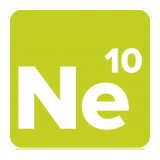 |
Project Ne10
An open, optimized software library for the ARM architecture.
|
 |
Project Ne10
An open, optimized software library for the ARM architecture.
|
Ne10 uses CMake to manage the project's build process in a toolchain-independent, cross-platform manner. As such, you will need CMake installed to build Ne10. It can typically be obtained via a package manager (for example, with sudo apt-get install cmake), but can otherwise be built from source. More information about CMake is available at cmake.org.
All builds also require a local copy of the codebase. If you haven't already done so, you can download the latest Ne10 release as a zip or tarball. Or, alternatively, you can clone the current cutting-edge version of Ne10 directly with Git by running:
As CMake does most of the cross-platform heavy lifting, Ne10 can be natively compiled on *nix systems by running just a few simple commands:
This process, if completed successfully, will yield the libNE10.a static library file in the $NE10_PATH/build/modules/ directory. In addition, a sample program NE10_test_static compiled with this static library will be generated in $NE10_PATH/build/samples/.
You can also generate a dynamic, shared library file by passing CMake the -DNE10_BUILD_SHARED=ON option. This generates a handful of *.so files in the same directory as the static library file, in addition to the dynamically linked NE10_test_dynamic sample program.
By default, the release version of the library is built. The debug version can instead be produced by passing the -DBUILD_DEBUG=ON option to CMake. Note also that the target architecture can be varied by modifying the NE10_LINUX_TARGET_ARCH environment variable (or, overriding this, the -DNE10_LINUX_TARGET_ARCH=$ARCH CMake option).
Cross-compiling Ne10 for *nix platforms is similar to native compilation, but using a cross-compilation toolchain. A boilerplate toolchain file GNUlinux_config.cmake is present in the root directory of the project to allow for cross-compilation using the Linaro GCC ARM toolchain (obtained, for example, via sudo apt-get install gcc-arm-linux-gnueabihf), but this can also be modified to work with other toolchains. Using this augments the compilation process to look something like the following:
The products of the build are identical to that of native compilation, with the generated library files in $NE10_PATH/build/modules/. The dynamic and debug versions of the library can also be produced using the same CMake options as in native compilation. When running the NE10_test_dynamic program produced from compilation of the shared library, keep in mind that the library file must be in a known location such that it can be properly loaded and used (for example, by setting the LD_LIBRARY_PATH environment variable appropriately).
It's also worth keeping in mind that Ne10 uses some GAS (GNU Assembler) syntax, which can make building with other compilers — such as the LLVM-based clang — a bit awkward if these files are included in the build. This is dealt with in the build instructions for common platforms (below) where appropriate, translating the problematic syntax into supported equivalents, but may require more involved CMake configuration changes for more obscure compilation environments.
Additionally, for systems without hardware floating point support, the appropriate compilation options should be added to the CMAKE_C_FLAGS and CMAKE_ASM_FLAGS variables in the root CMakeLists.txt file. For example, -mfloat-abi=softfp -mfpu=neon.
As Android is itself a *nix platform, all the information about compilation to general *nix platforms applies. Android is a particularly common use case for Ne10, however, and so the project provides a pre-configured CMake toolchain file especially for compilation using Android's Native Development Kit (NDK). Thus, to cross-compile for Android, the following steps can be used:
This Android toolchain file also uses two additional environment variables which can be set as appropriate for the target:
ANDROID_API_LEVEL specifies the Android API level.ARM_ANDROID_TOOLCHAIN_VERSION specifies the GCC version to be used.As iOS is itself a *nix platform, all the information about compilation to general *nix platforms applies. Like with Android, iOS is an especially common use case for Ne10, and so a pre-configured CMake toolchain file is provided to make the compilation process easier. It is assumed within this that iOS builds will be performed using macOS with a copy of Xcode installed.
As well as selecting the correct compilation tools, the iOS toolchain file also activates infrastructure within the CMake configuration files to translate any problematic GAS assembly syntax into a form that clang can process. Thus, to cross-compile for iOS, the following steps can be used:
With the default Xcode install path, the IOS_DEVELOPER_PATH variable should be set to /Applications/Xcode.app/Contents/Developer.
The infrastructure surrounding the iOS platform configuration also allows for an additional option MIN_IOS_VER to be specified to CMake (e.g. -DMIN_IOS_VER=5.0) to specify the minimum supported iOS version. When targetting iOS versions older than 7.0, setting this variable to 7.0 will result in a runtime error.
In the case that CMake gives a warning regarding the CMAKE_OSX_SYSROOT variable, please ensure that IOS_DEVELOPER_PATH is set correctly, as the former variable is derived from the latter in the iOS toolchain file. If necessary, this SDK path can be set explicitly by directly modifying the ios_config.cmake file.
Ne10 has a number of unit tests, built around a modified version of the testing framework "seatest". Particularly, the project has three different modes of testing:
These can be built by specifying the -DNE10_BUILD_UNIT_TEST=ON option to CMake in addition to one of -DNE10_SMOKE_TEST=ON, -DNE10_REGRESSION_TEST=ON, and -DNE10_PERFORMANCE_TEST=ON. The corresponding test programs for each Ne10 module will then be generated in the $NE10_PATH/build/test/ directory.
Ne10 also comes with two demo applications, one for Android, and another for iOS. Both demos need the Ne10 library to be installed on the system, which can be accomplished by running make install after building the project. Following this, the project files can be opened in Xcode or the Android SDK as usual. Devices are expected to have Internet access in order to run the demo applications correctly.
 1.8.11
1.8.11